Early Action Protocols activated in Guatemala and Honduras as Hurricane Julia hits Central America
In the early hours of Sunday, 9 October 2022, Hurricane Julia hit Nicaragua’s central Caribbean coast with sustained windspeeds of 140 km/h, leading to heavy rains in many parts of Central America. Based on forecasts, and anticipating the extreme rains brought on by Julia, the Guatemalan Red Cross and the Honduran Red Cross both activated their Early Action Protocols (EAPs) - for Floods associated with Tropical Cyclones, and for Tropical Storms, respectively - on Friday, 7 October. Immediately, volunteers and staff were deployed to at-risk communities to help them protect themselves and their livelihoods before the flood peaks were reached.

Find out more in our interview with Mathieu Destrooper, the German Red Cross's regional forecast-based financing coordinator.
Interview conducted during the afternoon of Sunday 9 October 2022.
Mathieu, when was the decision taken to activate?
As early as Monday, 3 October, when we started receiving information on the development of cyclonic activity in the Atlantic Ocean. However, at that point, there was a lot of uncertainty regarding the magnitude and path of a possible storm. But there were different potential tracks and one possibility was the storm hitting Central America, so we monitored its developments closely. From Wednesday onwards, the forecasts showed quite clearly that Central America would be affected, with landfall predicted in Nicaragua. However, given past humanitarian impacts and the time available for meaningful anticipatory action, our EAPs focus not on the windspeeds, but rather the expected heavy rains, leading to floods and landslides. So our EAPs use two triggers. The first – that a hurricane will hit Central America – was already confirmed on Thursday, 6 October, by the different national hydrometeorological services in the region. The second trigger is based on a flood forecast and this trigger was met on Friday, 7 October, with a five-day outlook.
What happened when the first and second triggers were met?
When the first trigger was met, both National Societies mobilized and deployed volunteers and staff to those areas most at risk, and our monitoring of the storm intensified. When on Friday, the flood forecast model that we use (GloFAS) indicated a likelihood of more than 50 per cent for floods exceeding a 1-in-10-year return period, our second trigger was reached and the EAPs were activated. Upon this, the IFRC’s Disaster Response Emergency Fund made funding available – 478,789 Swiss francs for Guatemala, and 360,830 Swiss francs for Honduras – and the teams on the ground started preparing those areas forecast to be most impacted.
What actions are being taken and why?
In both countries, the focus is on cash assistance and support in water, sanitation and hygiene. Past floods have shown that access to safe drinking water is a severe challenge, for example following the inundation of wells, and we have seen a significant increase in the occurrence of acute diarrheal diseases. To mitigate and reduce these impacts, we plan to distribute water purification kits, and install water treatment plants and storage tanks to ensure access to safe drinking water, while at the same time raising awareness among at-risk communities. Since floods lead to significant loss of livelihoods, and those most exposed are the daily labourers or subsistence farmers who have little to no savings, we provide cash assistance to the most vulnerable families to cover their immediate needs, such as evacuating family members and livelihood assets, protecting homes, temporarily leasing a space for the duration of the evacuation, or buying emergency stock. In total, the EAPs aim to assist 3,000 families in Guatemala (1,000 families will receive cash assistance) and 2,700 families in Honduras (where 700 families will receive cash assistance).
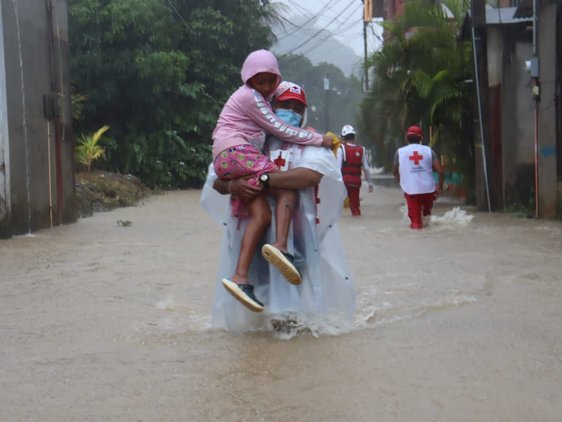
EAP Activation Guatemala © Guatemala Red Cross
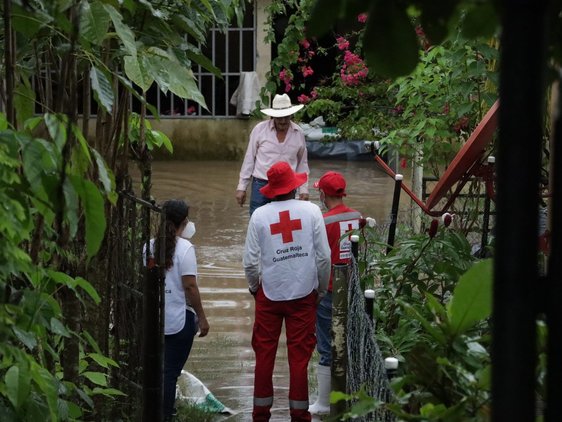
EAP Activation Guatemala © Guatemala Red Cross
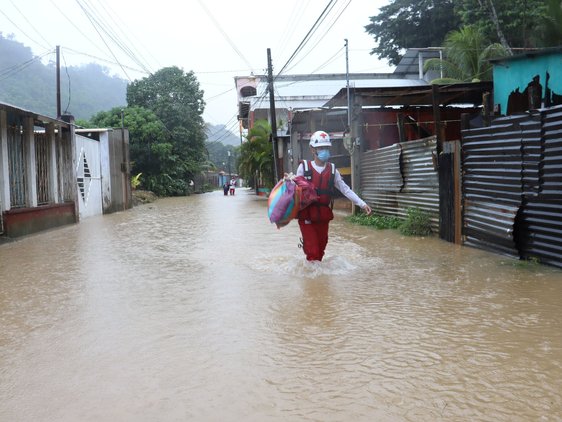
EAP Activation Guatemala © Guatemala Red Cross
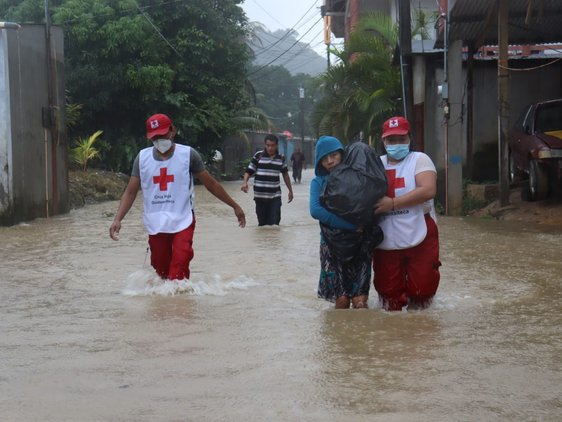
EAP Activation Guatemala © Guatemala Red Cross
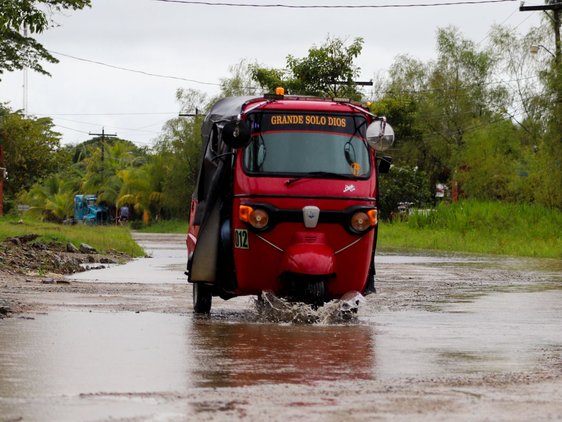
EAP Activation Honduras © Natalie Acosta, GRC
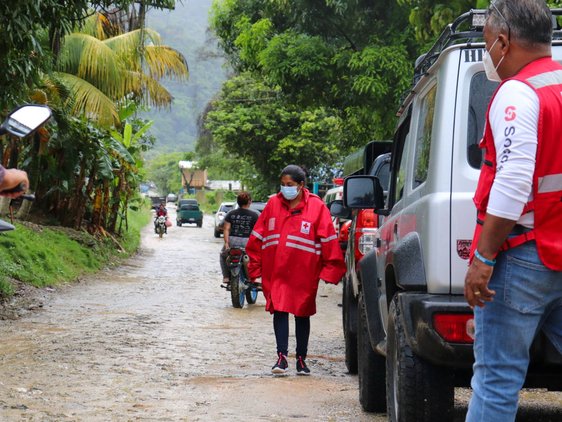
EAP Activation Honduras © Natalie Acosta, GRC

EAP Activation Honduras © Natalie Acosta, GRC
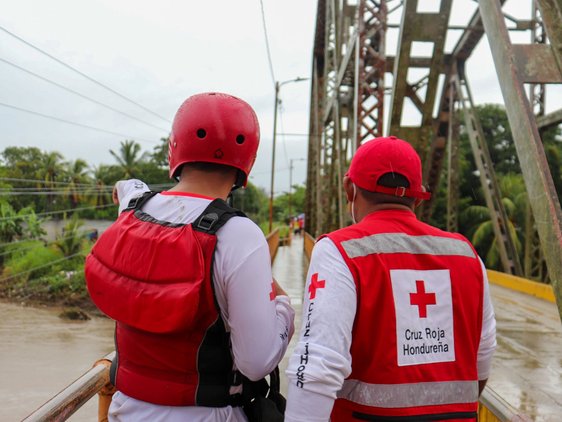
EAP Activation Honduras © Natalie Acosta, GRC
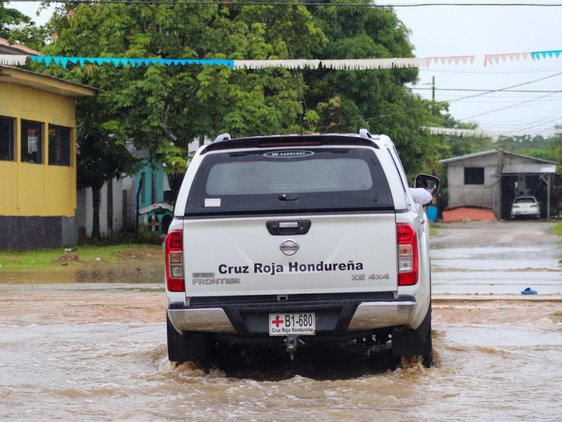
EAP Activation Honduras © Natalie Acosta, GRC

EAP Activation Guatemala © Guatemala Red Cross
EAP Activation Guatemala © Guatemala Red Cross
EAP Activation Guatemala © Guatemala Red Cross
EAP Activation Guatemala © Guatemala Red Cross
EAP Activation Honduras © Natalie Acosta, GRC
EAP Activation Honduras © Natalie Acosta, GRC
EAP Activation Honduras © Natalie Acosta, GRC
EAP Activation Honduras © Natalie Acosta, GRC
EAP Activation Honduras © Natalie Acosta, GRC
Is everything going according to plan?
There are some challenges. In forecast-based financing (FbF) normally, once an EAP is approved, everything is pre-agreed and financed, with a lot of the stock required for the early actions prepositioned well in advance of an activation. One difficulty is that since the EAPs were only recently approved, not all prepositioning had been finalized, so we are rushing to speed this up. This challenge is compounded by the fact that banks and shops were closed over the weekend, when the EAPs were activated.
Also, there is always a bit of Murphy’s law in every disaster, in the sense that a disaster never comes alone. In Honduras and Guatemala, emergency assistance was already needed in some areas for smaller-scale floods and landslides caused by the heavy rains that occurred two weeks ago. Now Julia comes on top of that, making the situation much worse and further extending the affected areas.
The Honduran Red Cross and the Guatemalan Red Cross have 2,000 active volunteers. Those that live close to potentially affected areas are deployed first. The volunteers register the most at-risk families and once this is completed, those families receive cash, water treatment and hygiene items or both, depending on their vulnerability. Our intention is to reach these families in the window we have for anticipatory actions: so, from Friday, when the trigger was reached, to Thursday, 13 October, when flood levels are expected to peak. The rainy season already makes registering and reaching target groups a challenge, though; many areas and streets are already flooded, not extremely so, but still making access difficult. It is crucial that we reach families in time, before the flood waters completely isolate them.
Thank you, Mathieu.
Forecast-based financing (FbF) establishes mechanisms to automatically allocate funding for early actions once forecasts indicate a high probability of an extreme weather event. The goal is to anticipate disasters in order to prevent and/or reduce their humanitarian impacts. A key element of FbF is that the allocation of financial resources is agreed in advance, along with the specific forecast threshold that will trigger the release of those resources for the implementation of pre-defined early actions. The roles and responsibilities of everyone involved in implementing these actions are defined in an EAP.
The EAPs – for Floods associated with Tropical Cyclones in Guatemala, and for Tropical Storms in Honduras – were finalized in 2022 as part of an FbF project implemented by the Guatemalan Red Cross and Honduran Red Cross, with support from the German Red Cross, the IFRC, the Red Cross Red Crescent Climate Centre and local authorities, and with funding from the German Federal Foreign Office. These are the first EAPs to be activated in Central America. The activation is funded by the IFRC’s DREF.
Notifications of these activations are available here for Guatemala (PDF) and here for Honduras (PDF). You can download a summary of the respective EAPs here and here (PDF).
